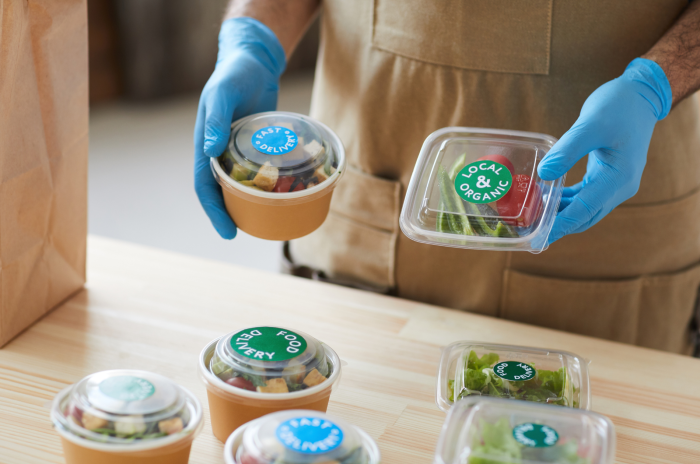
Phthalates Testing Methods: How to Identify Phthalates in Products
Understanding phthalates testing methods is crucial to comply with international safety regulations, but it can be difficult to understand which test method is right for your product. This article provides an in-depth look at how to identify the presence of phthalates in various products, emphasizing the importance of using the right testing method for your destination market’s regulatory requirements.
The Necessity of Phthalates Testing
Testing for phthalates is crucial to ensure compliance with a variety of international safety regulations, as compliance directly impacts a product's legality and marketability, and consumer safety. The products under the scope of the regulation, as well as the specific phthalates restricted, vary across regulations and thus, across markets.
Key regulations include:
The European Union's REACH (Registration, Evaluation, Authorization, and Restriction of Chemicals) Regulation, which imposes strict limits on the use of certain phthalates in all member countries across a variety of product types including toys, textiles, and more.
The United States’ Consumer Product Safety Improvement Act (CPSIA), which specifically targets phthalates in children’s toys and childcare articles.
California's Proposition 65, which requires businesses to provide warnings about significant exposures to chemicals that cause cancer, birth defects, or other reproductive harm, including phthalates, for products across industries sold in California.
The EU’s Restriction of Hazardous Substances (RoHS), which restricts the use of specific phthalates in electrical and electronic equipment.
For more details on the importance of phthalates testing and regulations governing phthalates in consumer products, read: Phthalates Testing in Consumer Products: Ensuring Safety and Regulatory Compliance
Phthalates Testing Methods for Regulatory Compliance
There are a variety of methods to identify the presence – or quantity – of phthalates in your products. The selection of the appropriate testing method depends on several factors, including the type of product, the specific phthalates used, the intended use of the product, and the regulatory standards applicable in your target market. For instance, products intended for children or those in contact with food may require more stringent testing methods to comply with stricter safety regulations. Additionally, the composition of the product material – whether it's a plastic, a cosmetic formulation, or a textile – can dictate the most effective testing technique. Understanding these nuances is crucial to ensure not only compliance with regulatory standards but also to uphold consumer safety and maintain market trust.
Here is a brief overview of key phthalates testing methods.
Quantitative Analysis by Weight:
This testing method is essential for accurately measuring phthalate concentrations in various products, which is crucial for meeting international safety standards. Testing methods include:
Dissolution into Tetrahydrofuran (THF) Method:
What It Is: This preparatory technique involves dissolving the product sample in THF, a solvent that effectively extracts phthalates from solid materials.
Application: This method is particularly important for products where phthalates are integral to the material, such as certain plastics and synthetic fabrics. It ensures a comprehensive extraction process, setting the stage for precise quantification methods like LC-MS and GC-MS, described below.
LC-MS (Liquid Chromatography-Mass Spectrometry):
What It Is: Liquid chromatography separates compounds in the sample, and mass spectrometry provides detailed molecular information, including mass and structure, to quantify phthalates or other chemical compounds present.
Application: Its precision makes it indispensable for products where even trace amounts of phthalates need to be identified and quantified, such as in cosmetics and personal care products. It's key to ensuring compliance with rigorous international safety standards like those set by REACH.
GC-MS (Gas Chromatography-Mass Spectrometry):
What It Is: GC-MS is a powerful analytical method where gas chromatography vaporizes and separates compounds, and mass spectrometry provides detailed identification and quantification.
Application: This method is essential for testing products like children's toys and household items, where phthalates are often used as plasticizers. It ensures that products meet the stringent safety standards set by regulations like the CPSIA or REACH.
Phthalates in Food Contact Materials: Migration Testing
This testing method assesses the likelihood and extent of phthalates migrating from products into their immediate environment or substances they come into contact with, under normal usage conditions.
While migration testing is relevant to a variety of product types, this testing is particularly vital for food contact materials and packaging, as it helps manufacturers ensure that phthalates do not migrate into food or beverages. It's a key aspect of ensuring compliance with food safety regulations governing the presence of phthalates in food contact materials, like U.S. CFR FDA 21 CFR parts 175 through 178 and EU Regulation 10/2011.
Read more: A Closer Look at Phthalates in Food Contact Materials: Testing and Safety
With these comprehensive testing methods, manufacturers can ensure their products meet the highest safety standards, fostering consumer trust and brand reliability. Understanding and applying the appropriate testing method for each product type is critical for maintaining compliance with the ever-evolving international safety regulations.
QIMA’s Role in Phthalates Testing
QIMA offers phthalates testing services for a variety of product categories, ensuring your products comply with international safety standards. Our expertise goes beyond chemical laboratory testing; we provide critical oversight to help you get the right tests at the right time, and facilitate communication with suppliers to ensure manufacturing processes are aligned with regulatory requirements. With our advanced testing facilities and expert guidance, you can confidently navigate product compliance, ensuring safety and quality.
Contact us today to learn more about our phthalates testing services.
More Resources
CPSIA Phthalate Restrictions for Children's Products – Learn more about CPSIA’s restrictions on phthalates in products for children.
CPSIA - Consumer Products Test Hazardous Materials - Beyond children’s products, CPSIA regulates the inclusion of phthalates in other consumer products such as vinyl flooring, food packaging, and personal care products. Read more about CPSIA’s testing requirements here.
Related Articles


